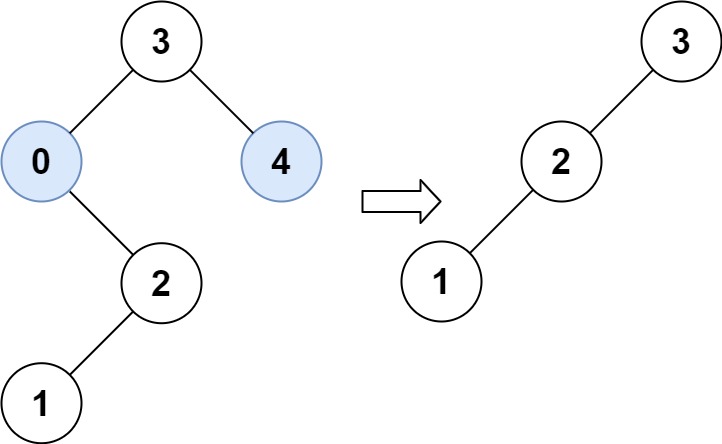669. Trim a Binary Search Tree


Description
Given the root of a binary search tree and the lowest and highest boundaries as low and high, trim the tree so that all its elements lies in [low, high]. Trimming the tree should not change the relative structure of the elements that will remain in the tree (i.e., any node's descendant should remain a descendant). It can be proven that there is a unique answer.
Return the root of the trimmed binary search tree. Note that the root may change depending on the given bounds.
Example 1:

Input: root = [1,0,2], low = 1, high = 2 Output: [1,null,2]
Example 2:

Input: root = [3,0,4,null,2,null,null,1], low = 1, high = 3 Output: [3,2,null,1]
Constraints:
- The number of nodes in the tree is in the range
[1, 104]. 0 <= Node.val <= 104- The value of each node in the tree is unique.
rootis guaranteed to be a valid binary search tree.0 <= low <= high <= 104
Solution
trim-a-binary-search-tree.py
# Definition for a binary tree node.
# class TreeNode:
# def __init__(self, val=0, left=None, right=None):
# self.val = val
# self.left = left
# self.right = right
class Solution(object):
def trimBST(self, root, L, R):
"""
:type root: TreeNode
:type L: int
:type R: int
:rtype: TreeNode
"""
if not root:
return None
if L > root.val:
return self.trimBST(root.right, L, R)
elif R < root.val:
return self.trimBST(root.left, L, R)
root.left = self.trimBST(root.left, L, R)
root.right = self.trimBST(root.right, L, R)
return root